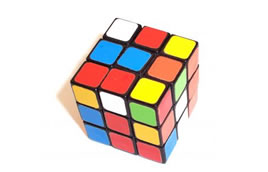The 2008 ITRA–BTHA Awards - Prize Winners
____________________________________
The ITRA–BTHA PRIZES FOR OUTSTANDING TOY RESEARCH were awarded for the first time during the 2008 World Congress of ITRA, in Nafplion, Greece. The ITRA–BTHA Prize is given in recognition of outstanding research in the field of toy research. Applications were judged on the basis of the significance of the work, creativity, methodology, and clarity of presentation. The Awards Committee, consisting of Gilles Brougère (France), Jeffrey Goldstein (Netherlands), Cleo Gougoulis (Greece), Sudarshan Khanna (India), and Stephen Kline (Canada), bestowed the senior research prize upon Jan Phillips for her article, ‘Accomplishing family through toy consumption.’ The student prize went to Hyun-Jung Oh for her work, ‘The phenomenon of dolls' houses: Putting together memories and fantasies’, (MA thesis in Anthropology, Material & Visual Culture at University College London).
The prize-winning research is summarized below.
Jan Phillips. Accomplishing family through toy consumption. In Karin M. Ekstrom & Birgitte Tufte (eds.). (2007). Children, media and consumption. Goteborg, Sweden: NORDICOM. Pp. 287-300.
Jan Phillips holds an M.A. in Sociology from Brown University. She is currently Associate Dean for Outreach at the University of Southern Maine’s Lewiston-Auburn College (U.S.A.).
Phillips explores the ways family members, including children, negotiate the purchase uses, and meanings of toys, arguing that this form of interaction helps define and construct not just family members as consumers – the “deserving” child, say, or “generous” parent – but, more importantly, the social essence of family. Her study draws on current literature as well as recollections of childhood memories.
Rather than treat children as incompletely socialized “others” still preparing for life, Phillips argues that children deserve to be studied as competent social actors, capable of helping to construct their own lives and family trajectories with worthwhile desires, abilities, and contributions.
Phillips explores the ways we accomplish family through toy consumption. Her work features qualitative content analysis of 141 retrospective childhood memory texts gathered over 6 years, written by a group of both traditional-aged (18-22 years old) and older, “non-traditional” aged college students in the United States. Students in sociology classes were asked to relate childhood to the activities and material objects that constitute everyday consumption. Students did so in an intensely personal way through several assignments, one of which asks them to write a prose or poetry ode to a favourite childhood toy. Other assignments ask them to interview someone older than 65 about their remembered childhood play and work. In the toy ode, students note why it was their favourite toy, how they acquired it, what it meant to play with the toy, and what it permitted them to do 11 or do better. They also commented on the role toys play in social life. The resulting odes, up to six pages in length, recollect not only the material artefacts themselves but also issues of selfhood, intention, desire, and their relationship to these objects. Profound attachments and emotions thus get reflected in astonishingly creative odes, which sometimes have been accompanied by in-class visits from the toys themselves.
Repeatedly, notes Phillips, we witness children using their desire to make claims and position themselves within their family, to solidify age cohorts and culture, to steer and appropriate adult indulgence, and to resist the powerful adults they live with. Many of the 141 toy odes talk openly, poignantly about childhood desire and material possession. Nearly a third (44 odes) use the explicit language of desire, with such phrases as had to have it, anticipated, wanted, desired, waited for, begged for or craved.
More ways of using toys to help construct family are witnessed in these odes: children frequently and insistently attribute life, if not family membership, to their playthings.
Adults recollecting their childhoods remember toy play for what a child might gain: fun, power and control over something, a way to let out frustration or aggression, responsibility, the ability to become a collector, comfort, a sense of adulthood, and social acceptance. They also remember what toys permitted them to do, or do better, toward accomplishing family.
Hyun-Jung Oh
The phenomenon of dolls' houses: Putting together memories and fantasies. MA thesis, Anthropology, material & visual culture, at University College London.
Dolls' houses and miniatures have emerged as a popular hobby among Western adults in the past three decades. Originating in the sixteenth century mercantile region of Southern Germany, dolls houses flourished in the Netherlands, England and America in line with the development of modern capitalism over four centuries. Throughout their long history, dolls houses served as a symbol of wealth and taste in the aristocracy and middle classes. In addition, their educational function for girls should not be ruled out. The revival of dolls’ houses as a grown-up’s hobby tends to reflect the socially imbued longing for nostalgia.
Particularly, adult women are likely to miniaturize an ideal residence as an objectification of childhood memory or fantasized history.
Dolls house activities, such as collecting and crafting, allow adult women to employ their knowledge of social history, creativity and lifetime’s skills in putting together memories and fantasies. Moreover, as children play with small objects such as toy cars and toy tea sets according to their body size, some elderly people who are physically challenged tend to satisfy their love of homebuilding in a miniaturised artefactual world.
In the modern day, dolls' houses are enjoyed by many people regardless of age and gender, though older women dominate the miniature hobby scene. Different from their predecessors, women in their later life are likely to objectify the memory or imagination of childhood or ancestry. Thus, Tudor, Victorian or 1940s styles are favoured.
Today’s hobbyists show diverse patterns in engaging with dolls' houses as collectors, makers or players. While some wealthy people collect expensive miniature pieces, others make them by employing their lifetimes' craft skills. However, the underlying premise of hobbyists of different categories is the activity of putting together an idyllic residential scene comprising a number of objects. In old-fashioned objects older women feel the warmth of the past, contrary to the coldness of contemporary things. Given most elderly people live apart from their children, the warmth of home is well presented in the presence of dolls and objects conjuring up the sense of interactivity.
Handling small objects tends to require great attention to objects and consequently bodily movement and senses. This might detach one from the surrounding world and its troubles. People in hardship would find something to lose themselves in, and they gain the sense of control over the world of objects which is manipulable and protected from the outside world.

